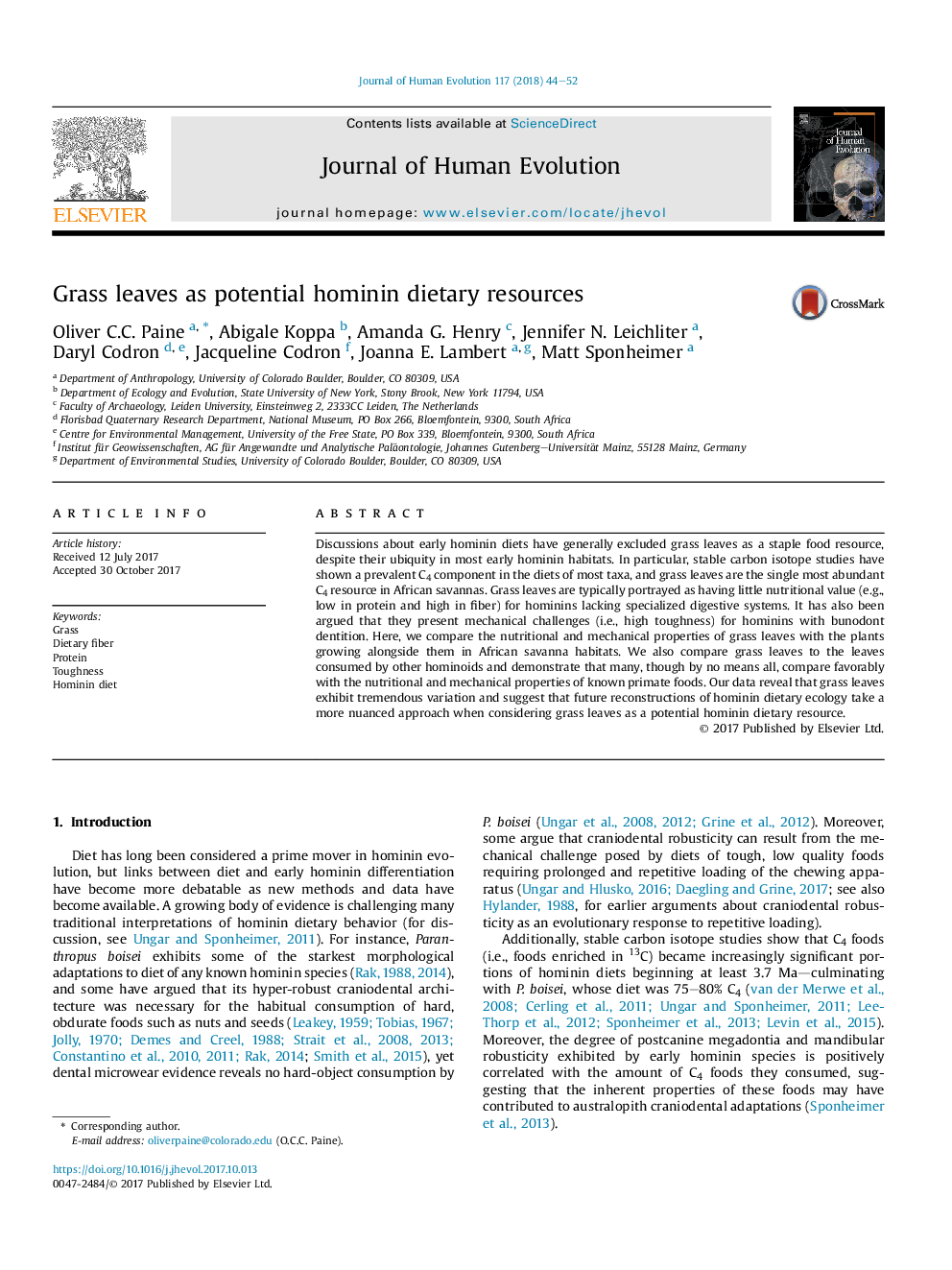| Article ID | Journal | Published Year | Pages | File Type |
|---|---|---|---|---|
| 8887293 | Journal of Human Evolution | 2018 | 9 Pages |
Abstract
Discussions about early hominin diets have generally excluded grass leaves as a staple food resource, despite their ubiquity in most early hominin habitats. In particular, stable carbon isotope studies have shown a prevalent C4 component in the diets of most taxa, and grass leaves are the single most abundant C4 resource in African savannas. Grass leaves are typically portrayed as having little nutritional value (e.g., low in protein and high in fiber) for hominins lacking specialized digestive systems. It has also been argued that they present mechanical challenges (i.e., high toughness) for hominins with bunodont dentition. Here, we compare the nutritional and mechanical properties of grass leaves with the plants growing alongside them in African savanna habitats. We also compare grass leaves to the leaves consumed by other hominoids and demonstrate that many, though by no means all, compare favorably with the nutritional and mechanical properties of known primate foods. Our data reveal that grass leaves exhibit tremendous variation and suggest that future reconstructions of hominin dietary ecology take a more nuanced approach when considering grass leaves as a potential hominin dietary resource.
Related Topics
Life Sciences
Agricultural and Biological Sciences
Ecology, Evolution, Behavior and Systematics
Authors
Oliver C.C. Paine, Abigale Koppa, Amanda G. Henry, Jennifer N. Leichliter, Daryl Codron, Jacqueline Codron, Joanna E. Lambert, Matt Sponheimer,
